Abstract
Osteoporosis in the elderly woman is determined by the amount of peak bone mass in adolescence, the premenopausal maintenance of such peak bone mass, and the rate of postmenopausal bone mass loss. The majority of research efforts in the past have been directed at defining the pathogenesis and treatment of postmenopausal osteoporotic bone loss. A comparatively new, and potentially fertile, area of research deals with factors responsible for attaining and augmenting peak bone mass in the adolescent female. Determinants of peak bone mass include genetic, nutritional, weight loading (exercise), and environmental factors. Nutritional factors, especially calcium, are potentially most amenable to therapeutic manipulation. Current data suggest that calcium deficiency exists in the adolescent female; and, although the current data are preliminary and not conclusive, they suggest that increasing calcium intake may be of value in increasing peak bone mass. However, assurance of compliance in the teenage female population in increasing calcium intake is difficult; relating a disease of the elderly, such as osteoporosis, to a teenage female population, a population that may experience the disease 40-50 years later, is frequently frustrating. Nevertheless, increased attention must be directed toward increasing calcium intake in this population of females. The amount of bone mass in adolescence may determine the amount of bone mass postmenopausally; a high or low peak bone mass may, therefore, contribute to protection against, or risk of, subsequent fracture. The ultimate target population for osteoporosis prophylaxis may indeed be the young, rather than the elderly, female.
Full text
PDF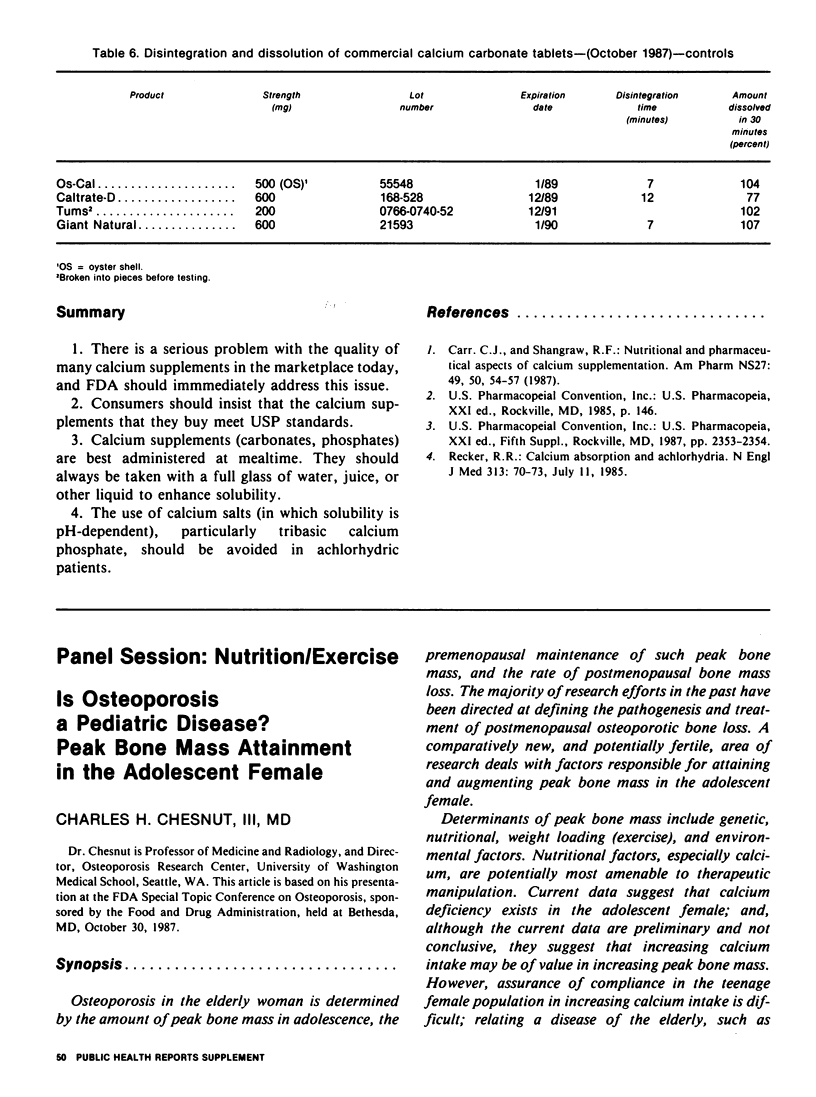
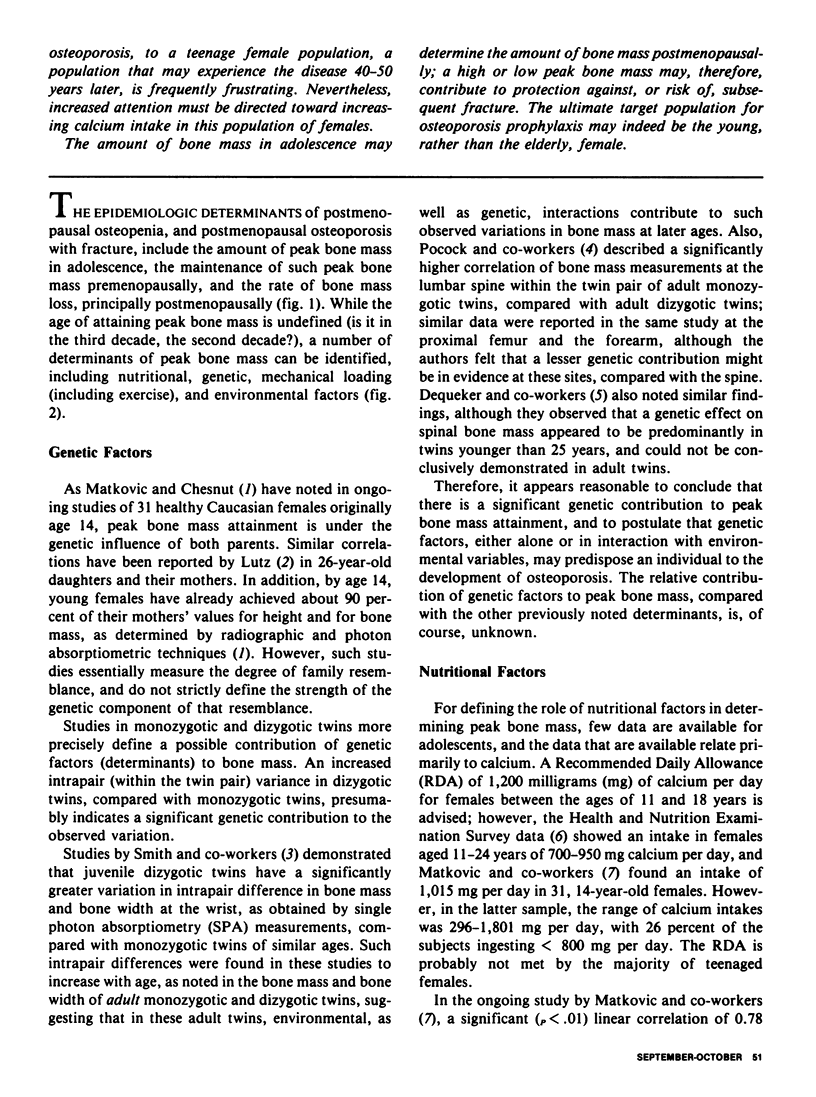
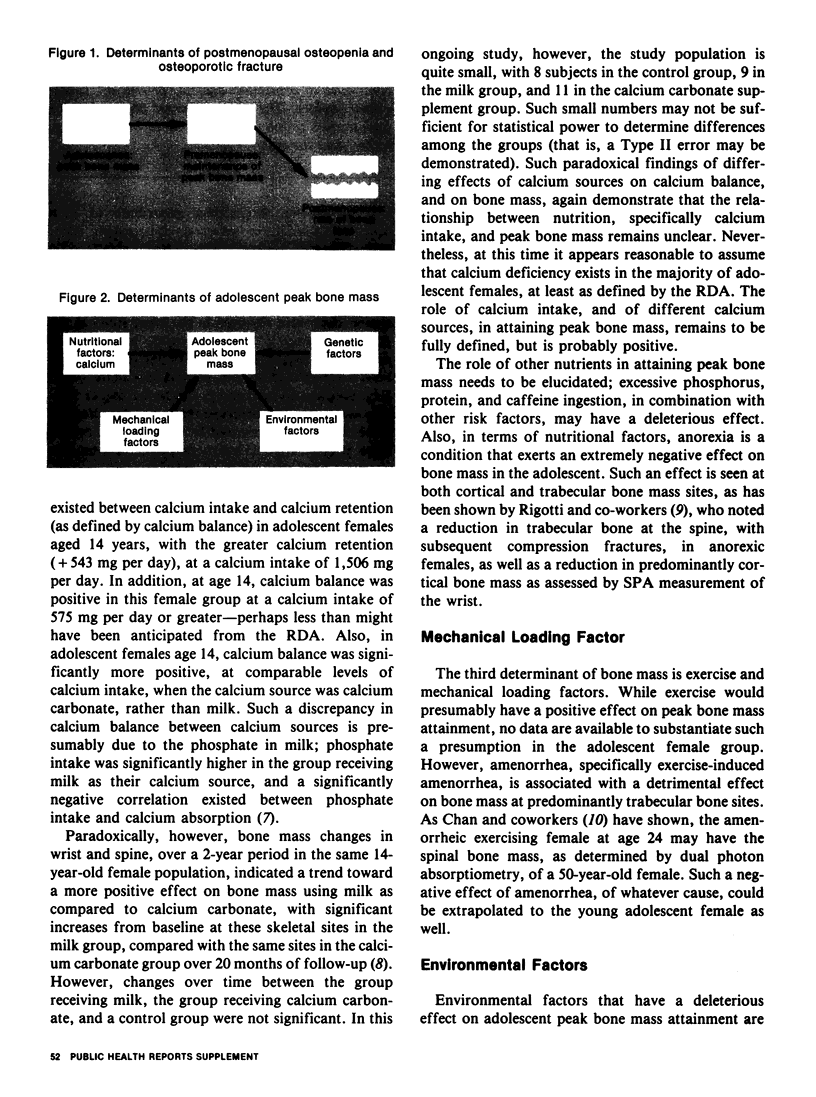
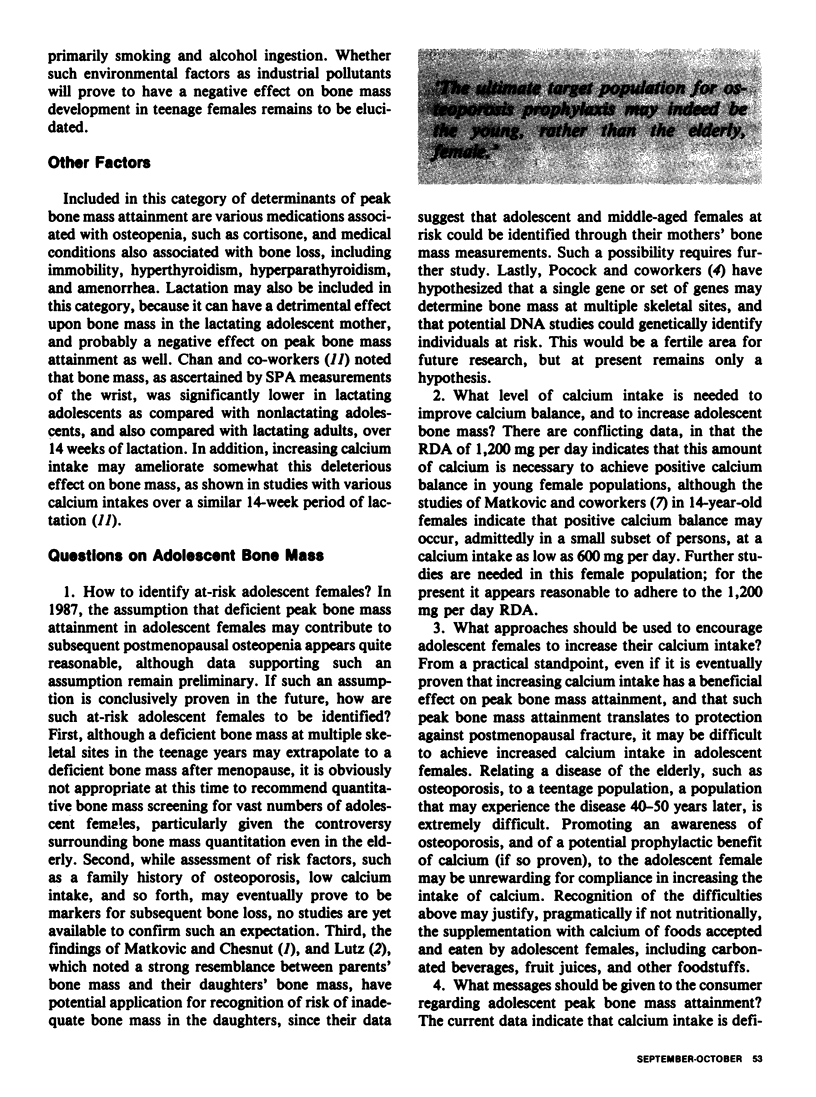
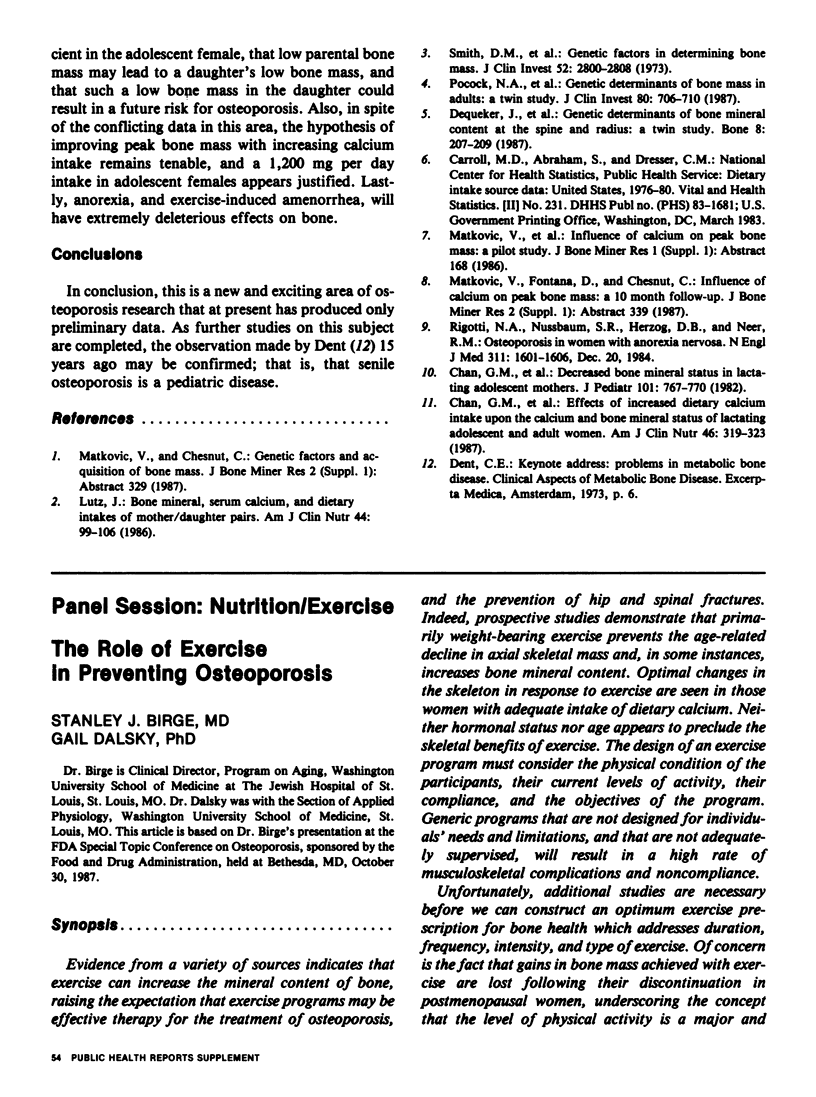
Selected References
These references are in PubMed. This may not be the complete list of references from this article.
- Chan G. M., McMurry M., Westover K., Engelbert-Fenton K., Thomas M. R. Effects of increased dietary calcium intake upon the calcium and bone mineral status of lactating adolescent and adult women. Am J Clin Nutr. 1987 Aug;46(2):319–323. doi: 10.1093/ajcn/46.2.319. [DOI] [PubMed] [Google Scholar]
- Chan G. M., Ronald N., Slater P., Hollis J., Thomas M. R. Decreased bone mineral status in lactating adolescent mothers. J Pediatr. 1982 Nov;101(5):767–770. doi: 10.1016/s0022-3476(82)80316-8. [DOI] [PubMed] [Google Scholar]
- Dequeker J., Nijs J., Verstraeten A., Geusens P., Gevers G. Genetic determinants of bone mineral content at the spine and radius: a twin study. Bone. 1987;8(4):207–209. doi: 10.1016/8756-3282(87)90166-9. [DOI] [PubMed] [Google Scholar]
- Lutz J. Bone mineral, serum calcium, and dietary intakes of mother/daughter pairs. Am J Clin Nutr. 1986 Jul;44(1):99–106. doi: 10.1093/ajcn/44.1.99. [DOI] [PubMed] [Google Scholar]
- Pocock N. A., Eisman J. A., Hopper J. L., Yeates M. G., Sambrook P. N., Eberl S. Genetic determinants of bone mass in adults. A twin study. J Clin Invest. 1987 Sep;80(3):706–710. doi: 10.1172/JCI113125. [DOI] [PMC free article] [PubMed] [Google Scholar]
- Rigotti N. A., Nussbaum S. R., Herzog D. B., Neer R. M. Osteoporosis in women with anorexia nervosa. N Engl J Med. 1984 Dec 20;311(25):1601–1606. doi: 10.1056/NEJM198412203112503. [DOI] [PubMed] [Google Scholar]
- Smith D. M., Nance W. E., Kang K. W., Christian J. C., Johnston C. C., Jr Genetic factors in determining bone mass. J Clin Invest. 1973 Nov;52(11):2800–2808. doi: 10.1172/JCI107476. [DOI] [PMC free article] [PubMed] [Google Scholar]


